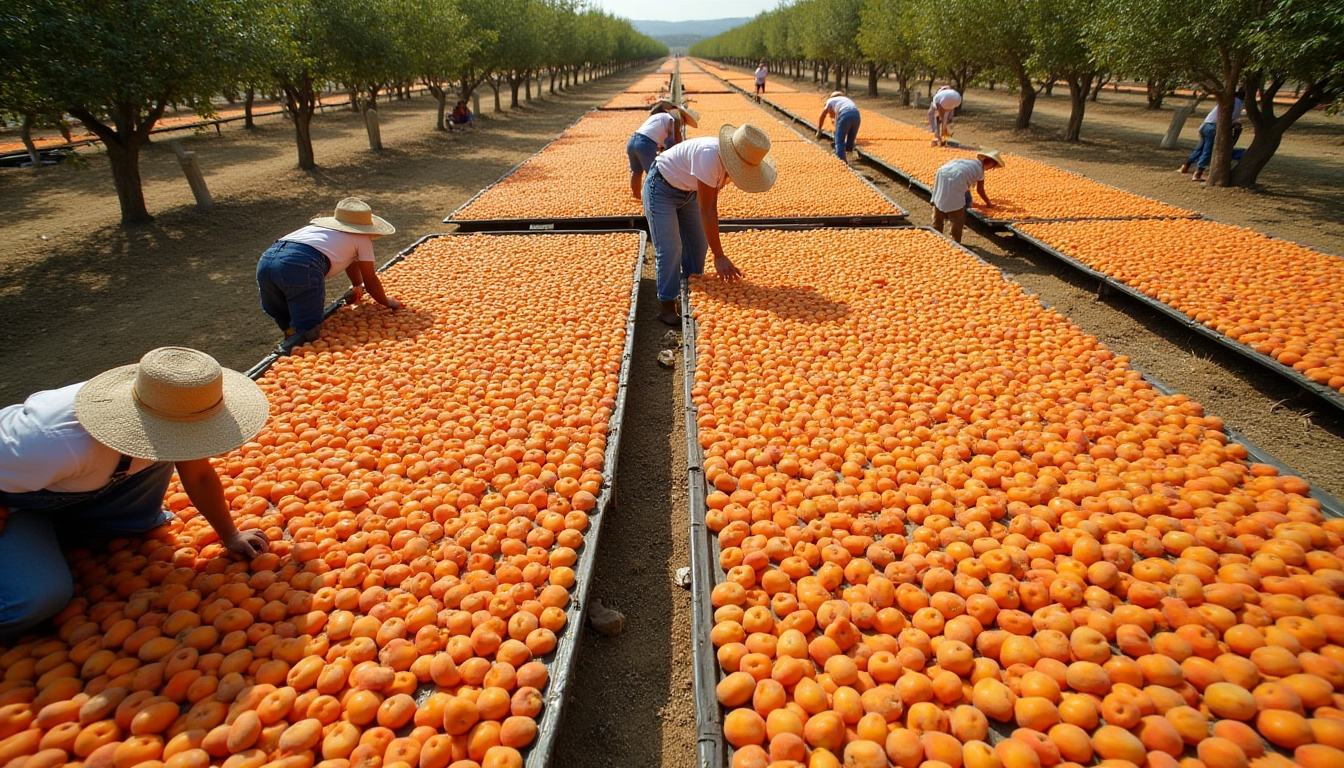The African Savanna is one of the most iconic and diverse ecosystems...
Nature’s Sweet Harvest: Millions of Tons of Dried Fruits Unveiled
Every year, millions of tons of dates, figs, raisins, and apricots journey from sun-drenched orchards to tables worldwide, embodying a blend of tradition, labor, and nature’s sweetness. This process, rooted in ancient agricultural practices, transforms raw fruit into delectable dried goods that are both nutritious and versatile. Let’s explore how these fruits are cultivated, harvested, and processed, and why they remain staples in diets across the globe.

Cultivation and Harvesting
Dates, figs, raisins, and apricots thrive in warm, arid climates, with major production hubs in the Middle East, North Africa, and California. Date palms, for instance, are dioecious, requiring both male and female trees for pollination, often done by hand in commercial orchards to ensure high yields. In 2021, California alone produced 59,450 tons of dates, valued at $228.6 million, with varieties like Deglet Noor and Medjool leading the market. Figs, grown on trees native to the Middle East, are harvested when ripe, either fresh or dried, with California contributing 98% of U.S. figs. Raisins, essentially dried grapes, are predominantly sun-dried in California’s San Joaquin Valley, which accounts for nearly half of global raisin production. Apricots, sensitive to frost, are carefully picked at peak ripeness to preserve their flavor and nutritional content.
The Drying Process
Drying is the key to transforming these fruits into long-lasting treats. Raisins are typically sun-dried, a natural process dating back to 1500 BC in Mesopotamia, while dates and figs may be mechanically dried in large ovens to control moisture levels. Apricots often undergo sulfite treatment to maintain their vibrant color, though this can cause reactions in sulfite-sensitive individuals. Freeze-drying, a costlier method, is also used for premium products, preserving texture and nutrients. This meticulous process ensures a shelf life that made dried fruits essential in ancient diets and continues to make them a global commodity today.

Nutritional Benefits
Dried fruits are nutritional powerhouses, packing fiber, antioxidants, and essential minerals into small servings. Dates, with nearly 7 grams of fiber per 3.5-ounce serving, aid digestion and stabilize blood sugar, making them a favorite during Ramadan fast-breaking. Figs and prunes are renowned for their laxative effects, thanks to fiber and sorbitol, while raisins offer potassium and antioxidants that support heart health. Apricots are rich in vitamin A and iron, but their high sugar content—up to 66% in some dried fruits—means moderation is key to avoid excess calorie intake.
From Orchard to Plate
The journey from orchard to plate involves skilled labor and modern technology. In date orchards, workers called “palmeros” climb towering palms or use mechanical lifts to pollinate, prune, and harvest. Figs and apricots require careful hand-picking to avoid bruising, while grapes for raisins are laid out to dry under the sun. Once processed, these fruits are sold at farmers’ markets, specialty stores, or transformed into products like date paste, fig compote, or apricot preserves, adding value and versatility.

Global Impact and Sustainability
The global demand for these fruits is staggering, with Egypt leading date production at 9.7 million tons in 2022. However, challenges like pests (e.g., red palm beetle) and water scarcity threaten yields. Sustainable practices, such as those at UC Davis’s breeding programs, aim to develop resilient cultivars, ensuring these fruits remain accessible. By supporting local farms, consumers can reduce food waste and bolster economies, as locally sourced dried fruits travel shorter distances, retaining freshness and nutrients.
Conclusion
From ancient Mesopotamia to modern kitchens, dates, figs, raisins, and apricots connect us to a rich agricultural heritage. Their journey from orchard to plate reflects human ingenuity and nature’s bounty, delivering flavors and nutrition that endure across cultures and centuries.
Don't miss those
Watch an Endangered Philippine Eagle Chick...
The Philippine eagle, a magnificent creature and the national bird of the...
Inside Europe’s Cutting-Edge Massey Ferguson Tractor...
Massey Ferguson, a global agricultural machinery leader, operates one of the most...
Real-Life Superhuman Moments Captured on Camera
In a world where challenges often seem overwhelming, glimpses of real-life heroes...
Billion Tons of Sugarcane: The Art...
Sugarcane, a towering tropical grass, is the backbone of global sugar production,...
U.S. Navy Pioneers Aerial Refueling Drone...
On August 23, 2025, the United States Navy marked a historic milestone...







